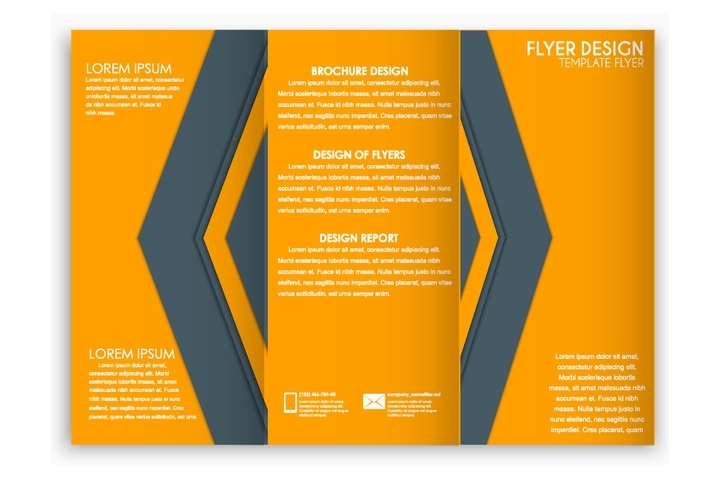Brochures are versatile tools that can help you achieve a number of different goals. Brochures are great for introducing people to your company and helping existing clients understand new updates and changes. If you want to learn how to create a brochure, use these 8 essential tips to your advantage!
1. Create A Purpose Before You Start

Starting the creation process with a clear goal will make how to create a brochure much easier. Take the time to define your objectives and the most important information that you want to share.
Without a purpose, your brochure will be all over the place, and likely won’t help you accomplish your long-term goals. Make sure your purpose is easy to understand for all people involved in the creation process. Find ways to measure if you’re achieving your vision and make sure to keep the brochure creation on a schedule.
2. Use A Copywriter

Working with a copywriter is a great way to ensure your brochure is written in a way that will help you achieve your goals. Try and get a copywriter involved from the start they can have input on the design process. People with copywriting skills know which headlines need to stand out the most and can suggest layouts that best compliment what’s written in the brochure.
A copywriter can create simple yet effective titles that will guide people through your brochure and grab attention. Giving extra thought to what’s written in your brochure will make it easier to achieve your goal. What you’re saying isn’t always as important as how it sounds and comes across.
3. Design With Your Audience In Mind

One of the biggest mistakes companies make is designing a brochure that they like on a personal level. Brochures need to be created with your target audience in mind. This is the only way to get people to keep reading after the first page. Consider the context of where people will be viewing your brochure.
If you’re handing out brochures at a conference, stick to a short, concise message and a small brochure size that can fit in a pocket or bag. If your brochure is for existing clients, you can afford to be more detailed. Thinking about how your readers will use your brochure is a great way to encourage quality design.
4. Use Textured Surfaces

Texture is one of the most effective physical features you can use to get your brochure to stand out. Not only do textured surfaces attract attention, but they also create a sense of value thanks to the visual and physical appeal of the textured design.
Try using letterpress for important titles and foil for highlighting important parts of the brochure design. Using high-quality paper is also another great way to get your brochure to stand out from others.
When you use quality materials, people will instantly feel the difference once they touch your brochure. This is a subconscious way you can encourage people to hang on to and read your materials.
5. Use Compelling Graphics

One of the most common blunders businesses make is using low-quality images in brochures. Images can be extremely compelling when used correctly. Low quality, out of place images, can be off-putting. Make sure to choose a high-quality image representative of your message for the cover. A compelling cover can get people to notice the design when displayed in a brochure holder and pick up your brochure without any convincing.
6. Test Different Fonts

Fonts are an incredibly underrated part of creating a successful brochure. The font used in your brochure must make your message consistent and easy to understand. Experiment with different fonts to help headings and subheadings stand out from the brochure content.
When it comes to font selection, less is more so look for one or two fonts that complement each other. Stay away from fonts with heavy flourishes and flamboyant designs.
7. Don’t Shy Away From Color

Similar to using high-quality images, using color in your brochure is another excellent way to stand out. You can use color to visually enhance important points throughout the brochure. Use a consistent color scheme that matches what people will find on your website or when they research your company.
Getting a graphic designer to help you balance and blend colors is a worthwhile investment that will raise the overall quality of your brochure. Don’t skimp on the printing as cheap ink will cause your colors to appear faded.
8. Double & Triple Check For Errors

Finally, before putting your brochure into circulation, make sure to double and triple check for errors. During the design process, it’s important to design your brochure for printing. Using CMYK colors will prevent your brochure from looking different from what you have designed on your computer. Take the time to check for typos and don’t be afraid to experiment with a few test printings.



